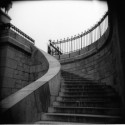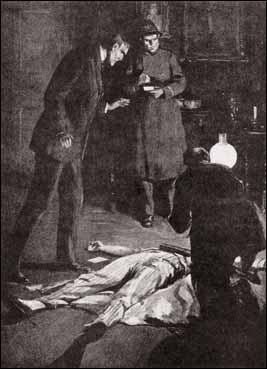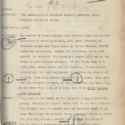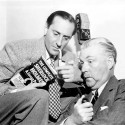A Scion Society of The Baker Street Irregulars

The 17 Steps: The Valley of Fear
Seventeen thoughts for further ponderance of the case at hand – The Valley of Fear (VALL)

THE FAME OF PROFESSOR MORIARTY
Watson calls Professor Moriarty “The famous scientific criminal, as famous among crooks as . . . he is unknown to the public.”
How does one manage fame among criminals, yet stay unknown to the public? Surely criminals are the most untrustworthy, sell-their-mothers-for-a-price, hard-drinking, dim-witted blabbermouths on the face of the planet, are they not? Is Watson completely off base here, or is such undercover fame possible?
MACDONALD’S MANY QUESTIONS
“Twice already in his career had Holmes helped him to attain success, his own sole reward being the intellectual joy of the problem. For this reason the affection and respect of the Scotchman for his amateur colleague were profound, and he showed them by the frankness with which he consulted Holmes in every difficulty.”
Wait a minute . . . Inspector MacDonald consults Holmes “in every difficulty,” yet Holmes has only helped him to attain success twice? Is this an indication that Holmes’s track record with the Yard is much over-estimated by his fans?
PROFESSOR OR EX-PROFESSOR?
Throughout the opening chapters of VALL, we hear of Moriarty referred to as a professor. Yet in “The Final Problem,” Holmes calls him “ex-Professor Moriarty,” telling how he lost his University job and has become an army coach in London. Which job is Moriarty holding at the time of this story? Have the “dark rumors” come up at this time to cost him his first job?
MORIARTY’S CURIOUS CHECKING ACCOUNTS
Holmes says, “I made it my business to hunt down some of Moriarty’s checks lately–just common innocent checks that he pays his household bills with. They were drawn on six different banks. Does that make any impression on your mind?”
Okay, so Moriarty’s hiding a lot of money. But why would he pay his everyday household bills from six different accounts, especially if he was trying to keep a low profile? Wouldn’t he just keep one modest account for that purpose?
MILK IMPORTED FROM SUSSEX
“The inspector was himself dependent, as he explained to us, upon a scribbled account forwarded to him by the milk train in the early hours of the morning.”
When Holmes and Watson were serving Thorneycroft Huxtable milk and cookies in “Priory School,” how far away did the milk come from, and how fresh was the milk? The early morning milk train of VALL evokes legions of Sussex milkmaids milking their cows in the middle of the night, then rushing the big milk cans to the depot to get the milk to London in time for the morning milk deliveries. Is that anywhere close to the actual timetable of milk in motion?
THE SOCIAL LIFE IN BIRLSTONE
In describing the way fifty-year-old John Douglas became popular in Birlstone, Watson reports a social schedule that seems slightly cryptic to the modern American. Douglas was “subscribing handsomely to all local objects, and attending their smoking concerts and other functions.” We also read: “Though a wretched rider, he turned out at every meet, and took the most amazing falls in his determination to hold his own with the best.”
Local objects? Smoking concerts? Riding at meets? Whatever these things are, it sounds like John is being quite socially proactive. On the other hand, is wife is not so lucky:
“His wife, too, was popular with those who had made her acquaintance; though, after the English fashion, the callers upon a stranger who settled in the county without introductions were few and far between.”
The husband gads about while the wife sits at home waiting for callers? What’s this telling us about Victorian social conventions?
A WEAPON FOR ASSASSINATION
“Lying across his chest was a curious weapon, a shotgun with the barrel sawed off a foot in front of the triggers. . . . The triggers had been wired together, so as to make the simultaneous discharge more destructive.”
As we see in this tale, the sawed-off, double-barrelled shotgun is a devastating weapon. Would such a gun be altered as above for any reason except murder? While one might consider sawing off a gun for a defensive weapon, does wiring the triggers together imply that the bearer knows exactly how many targets he’ll be shooting at in advance, and thus make it more specifically a murder weapon?
ONE MORE CHEST OF FACTS IN THE BRAIN-ATTIC
White Mason asks Holmes, “Do you carry the names of all the gun makers in the world in your memory?” Holmes waves off the question, but Mason does seem impressed with the detective’s identification of the handiwork of the Pennsylvania Small Arms Company. Still, we have to wonder about the answer to Mason’s question: could Holmes have conceivably known the names of all the gun makers? How many were there worldwide in the 1880s?
THE AMAZING CHANDOS!
Perhaps it’s a trivial thing, there’s a name in this tale that strikes me a bit odd. The former employer of Ames the butler is Sir Charles Chandos, the title and first name of which sound very British . . . but Chandos? Where might the Chandos line have hailed from? Is it the name one would expect of a country squire, or more something for a foreign mesmerist?
SO WATSON IS WRITING A BOOK, EH?
“I am sure we are honoured by your presence and to show you all we know,” White Mason says to Holmes and Watson, following it with: “Come along, Dr. Watson, and when the time comes we’ll all hope for a place in your book.”
According to an earlier chapter, this is late in the 1880s, a time at which Watson had only published “A Study in Scarlet,” and hadn’t really hit his great literary fame. Yet Mason knows Watson is writing “a book.” Was Watson taking notes on Holmes’s cases at that point with the idea of collecting them all into a book? Why didn’t VALL wind up in “Adventures” or “Memoirs” if such was the case?
A MAN AND HIS BICYCLE
Of the villain’s bicycle, we learn: “It was a well used Rudge-Whitworth, splashed as from a considerable journey. There was a saddlebag with spanner and oilcan, but no clue as to the owner.”
No clue? Surely a student of Sherlock Holmes would argue that every well-used object bears some indications as to its owner. What can we tell from these few details of the bicycle? Also, “A cycle map of the county lay on his bedroom table.” What would have made a cycle map different from a normal map? Were there trails specifically for bicycles in those days?
BUY A YELLOW COAT, GO ON A CRIME SPREE!
Of the suspected murderer, Inspector MacDonald reports: “He is at present reported from Leicester, Nottingham, Southampton, Derby, East Ham, Richmond, and fourteen other places. In three of them–East Ham, Leicester, and Liverpool–there is a clear case against him, and he has actually been arrested. The country seems to be full of the fugitives with yellow coats.”
Why all the yellow coats? Was yellow in particular fashion in late 1880s Victorian England? And when MacDonald says “there is a clear case against him,” does he mean a case for the Douglas murder, or a case for some other crime? Why would ne’er-do-wells favor this yellow coat fashion? Could Moriarty have been planning a “Yellow Coat Murder Special” day, in which he flooded the country with yellow-coated assassins and red herrings to cause confusion and cover-ups nationwide? (With Porlock getting Sherlock conveniently out of town as it begins.)
THE AMERICAN IN THE TOURIST SITE
Holmes announces he has read “a short but clear and interesting account of the old building, purchasable at the modest sum of one penny from the local tobacconist,” which turns out to be “a small tract, embellished with a rude engraving of the ancient Manor House.”
Was it normal for an inhabited home to have tourist-type brochures about it at a local business? Was Birlstone the seat of a nice tourist trade, to make such a brochure worthwhile? How would such an esteemed edifice fall so easily into the hands of a newcomer from America?
THE FAMOUS FACE OF DR. WATSON
John Douglas appears from nowhere, looks at everyone, then hands Watson a bundle of paper.
“I’ve heard of you,” he then says. “You are the historian of this bunch. Well, Dr. Watson, you’ve never had such a story as that pass through your hands before . . . . Tell it your own way; but there are the facts, and you can’t miss the public so long as you have those. I’ve been cooped up two days, and I’ve spent the daylight hours– as much daylight as I could get in that rat trap–in putting the thing into words. You’re welcome to them–you and your public. There’s the story of the Valley of Fear.”
Wait a minute . . . Watson is so famous that not only does Douglas recognize him on sight, he also hands him the details of the case so he can write it up? Watson’s true fame didn’t come until after Moriarty’s death, didn’t it? How did Douglas know so much about the literary doctor?
THE WICKED THINGS HE DID IN HIS BEDROOM
“In his bedroom at his new abode McMurdo felt it safe to take out the coining moulds, and under many a pledge of secrecy a number of brothers from the lodge were allowed to come in and see them, each carrying away in his pocket some examples of the false money, so cunningly struck that there was never the slightest difficulty or danger in passing it.”
Is making counterfeit coins on one’s bedroom a feasible endeavor? What coins would McMurdo have been making, and what metals might he have used to make them with? Wouldn’t his landlord have complained about the smell or mess? (He says, “I was helping Uncle Sam to make dollars. Maybe mine were not as good gold as his, but they looked as well and were cheaper to make.” But wouldn’t twenty-dollar gold pieces have been better still?)
THE RITUAL TOAST OF THE SCOWRERS
When it comes time for McMurdo and Baldwin to kiss and make up, Boss McGinty says, “”Let us drink the quarrelling toast of the lodge. After that, as you know, there can be no bad blood between us.”
The toast, apparently, goes like this. You put your left hand around your Adam’s apple (A manly toast, this! and say, “The clouds are heavy.”
The person your quarrell was with replies, “But they will forever brighten.”
It doesn’t say whether one man or both says the last line before drinking, but both would seem most natural for the words involved, “And this I swear!”
Any ideas where this toast or hand-around-the-throat gesture comes from? Do other secret societies use such toasts to settle fights?
BEGGING FOR TIME, OR CALLING HIS SHOT?
“Do you say that no one can ever get level with this king devil?” Cecil Barker asks, after learning it was Moriarty who finally got Douglas.
“No, I don’t say that,” Holmes replies with eyes that “seemed to be looking far into the future.” “I don’t say that he can’t be beat. But you must give me time — you must give me time!”
One is not quite sure how to read Holmes’s last words from VALL. Is he begging Barker’s patience? That exclamation point at the end makes it seem more a plea than a cool, calculated promise. Does Holmes feel he owes Barker? Would Barker eventually go so far as to hire Holmes to bring down the murderer of his friend Douglas?
The Seventeen Steps originally appeared on the Hounds of the Internet e-list from September 2000 to October 2001 and later on the Sherlock Peoria blog.
 Brad Keefauver, the 41st Garrideb, is the author of The Elementary Methods of Sherlock Holmes, Sherlock and the Ladies, and The Armchair Baskerville Tour. Former publisher of The Holmes & Watson Report, The Dangling Prussian, and a whole lot of obscure, collectable little things on our boy Sherlock. Keefauver is a member of the Baker Street Irregulars and the Adventuresses of Sherlock Holmes.
Brad Keefauver, the 41st Garrideb, is the author of The Elementary Methods of Sherlock Holmes, Sherlock and the Ladies, and The Armchair Baskerville Tour. Former publisher of The Holmes & Watson Report, The Dangling Prussian, and a whole lot of obscure, collectable little things on our boy Sherlock. Keefauver is a member of the Baker Street Irregulars and the Adventuresses of Sherlock Holmes.


